Diary of a Guide…Fish, Herons and a pug named Trump
A mixed week of lectures, meetings, scouting walks (again) and hidden gems.
Monday
Worked at home today catching up on paperwork and then went off this evening to the City for the City of London Guide Lecturers Association’s annual Melluish lecture, which this year was given by Museum of London Director, Sharon Ament and, this being an anniversary year, was on the Great Fire of London.
The lecture was held in the beautiful church of St Lawrence Jewry, the official church of the Lord Mayor of London and the City of London Corporation, and we were warmly welcomed by the vicar, Canon David Parrott. Appropriately, St Lawrence Jewry was rebuilt by Sir Christopher Wren following the 1666 Fire. There has been a church on the site since the 12th century, and Wren’s church was restored in the 1950s, having been badly damaged in the Blitz of 1940.
Sharon presented an interesting lecture that, not only told the basic story of the Great Fire, but also looked at it from the perspective of modern day crisis management. It was a different angle to take, but one that got a room full of City guides, who all know about the Great Fire, thinking about what in Sharon’s words would be called ‘a major incident’ today.
The Lord Mayor of the time, Sir Thomas Bludworth, came in for a bit of criticism regarding his lack of action but, in fairness to him, if he had started pulling down houses to create fire breaks without agreement from a higher authority, i.e. the King, then he could have been sued – see, and we thought litigation was a modern disease! You do have to feel a little sorry for the man as his year in office saw both the Great Plague and the Great Fire devastate London and, in his own words, he had “the severest year any man had”.
Sharon summed up why the Great Fire was so disastrous in three key points, aside from the baker not putting his ovens out properly. Firstly, complacency – fires were a regular occurrence back then and there was no reason at the start to think this fire was any different. Second, poor leadership – no one took control initially and it took time to mobilise troops and co-ordinate the fire-fighting efforts. And lastly, a lack of equipment – fire hooks, leather buckets and squirts were supposed to be kept in every parish church for use against fire, but this was not always the case.
The Museum of London has a new exhibition due to open in July for the 350th anniversary of the Great Fire, and ‘Fire! Fire!’ is sure to be this year’s hot ticket!
Thursday
Travelled over to Chiswick today for a meeting with a tour operator about some coach tours later in the summer. It took me back a good few years, as I used to work at Barclays Bank in Chiswick High Road in the late 1980s. The branch itself was completely unrecognisable, all shiny glass and automated tills, but the pub next door, aside from a refurbishment, hadn’t really changed at all. The Packhorse and Talbot was always a favourite haunt after work on a Friday evening when we’d all troop straight next door for a drink.
However, outside the Barclays I found a gem that certainly wasn’t there back in my day – a statue of Trump! No, not the US politician and billionaire Donald, but a pug called Trump, along with his more famous master William Hogarth. The 18th century artist, and his pet dog, lived locally and you can visit Hogarth’s country retreat, but sadly I didn’t have time today so it’s one to stick on my list for another time.
Saturday
Spent the morning doing a final recce of my Shoreditch walk that I’m leading on Monday evening. It takes a long time to get a walk right – contrary to popular belief guides don’t just turn up and talk about anything (not professionals anyway), and I have my own method for creating a walk.
First I come up with an area or theme (this might be dictated by the client), then I research the area and potential topics and work out a rough route on a map before going out to walk the potential route. Then more research, finalise the stops, walk the route again, and again, and then walk it forwards and backwards making any final changes. The backwards bit I find is very important, as you will often spot something that you just don’t see while walking in one direction only.
Looking up at the tops of buildings and down at the ground also occasionally reveals an overlooked gem, which is how I found the advert about cows and fish on a paving stone in Shoreditch High Street. They sell hand-crafted shoes in a shop in Leicester (I googled them), but I have absolutely no idea what their connection with Shoreditch, or fish, is!
Another gem, although thankfully easier to spot, was St Leonard’s Parish Church. The burial place of Richard Burbage, Shakespearian actor and the star of many of his plays, he was the first actor to play Hamlet, Romeo and dastardly Richard III. The church also has a lovely cottage garden complete with a wishing well and Shakespearian quotes. Not really what you expect to find at the top of Shoreditch High Street in amongst all the trendy bars and shops, but a pleasant oasis away from the noise of the traffic.
Sunday
Today was my first tour of the year at the National Trust’s Morden Hall Park – another oasis in London. I’ve been volunteering as a tour guide at what is effectively my local park for the past 5 years, and the history tours run every Sunday between March and October.
Morden Hall Park was a family estate that was left to the National Trust in 1941 when the last private owner, Gilliat Edward Hatfeild died – and no I haven’t spelt Hatfeild wrong, and no the family are not connected to Hatfield House (note the different spelling). Unlike most National Trust properties the park is free to enter as Hatfeild’s bequest stated the park should be run by the National Trust for the local people ‘provide a fee not be charged nor the gates locked’.
The park has a long history. First mentioned in the Domesday Book, the land was originally owned by Westminster Abbey before reverting to the Crown at the dissolution of the monasteries in the 1530s. Bought by two merchants in the mid 1500s, it was then sold to the Garth family who owned it for about 300 years before selling the estate to the Hatfeilds. The Hatfeilds were tobacco merchants and it was the snuff mills in the park, still there today but no longer operational, that brought them to the area.
The hall itself has never been open to the public (no original furniture and no money to bring it back to life as a stately home) and, like many of the cottages on the estate, it is rented out to bring in much needed income to support the park and its activities. However, there are many interesting features that make for a great walk round the park; the aforementioned snuff mills, Mr Hatfeild’s rose garden, and the Victorian stableyard to name a few. Plus the River Wandle runs through the park and the wetlands area attracts lots of birds and wildlife.
Today I was particularly fortunate to catch one of the herons posing in the sunshine on top of the eastern snuff mill – looks like he’s waiting to catch a fish, or maybe he’s just hiding from Trump?!

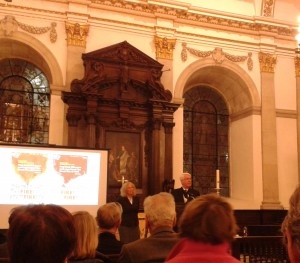
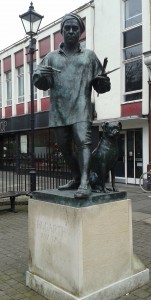
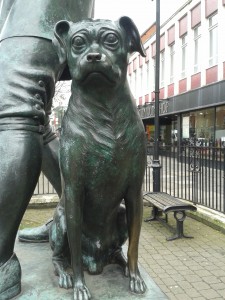
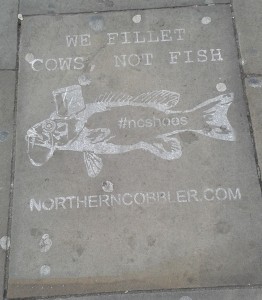
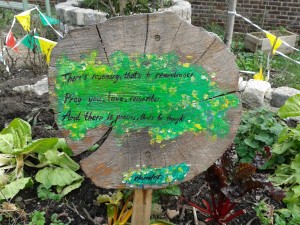
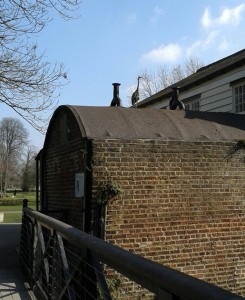
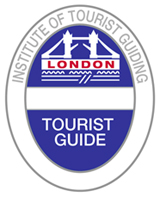
Leave a Reply
You must be logged in to post a comment.